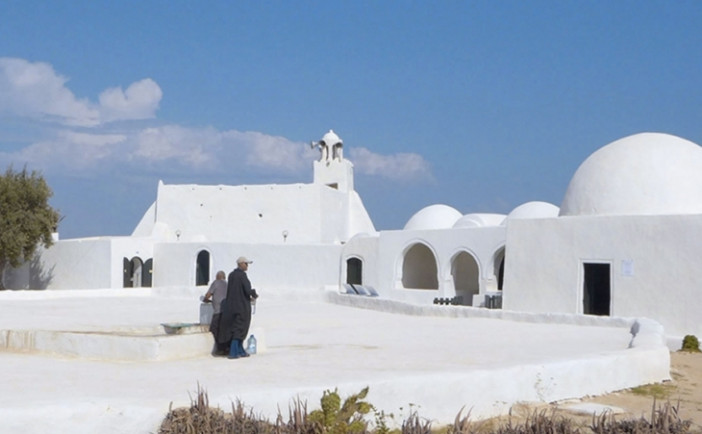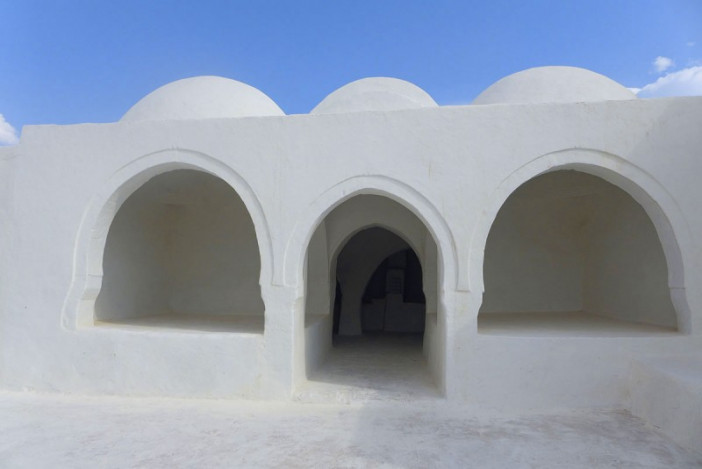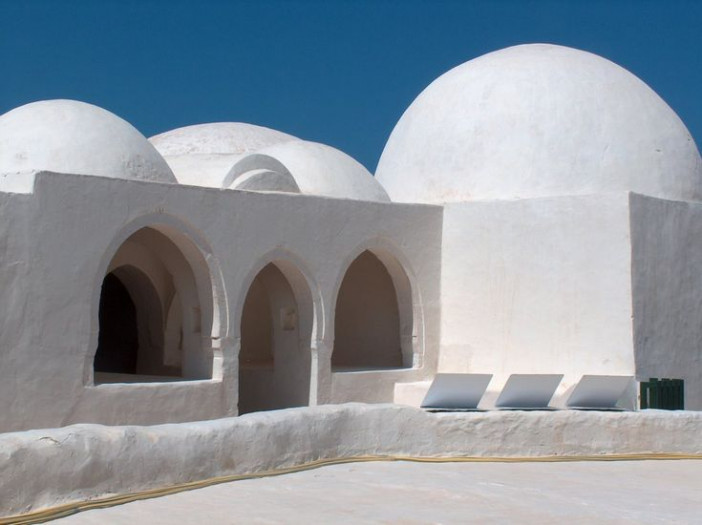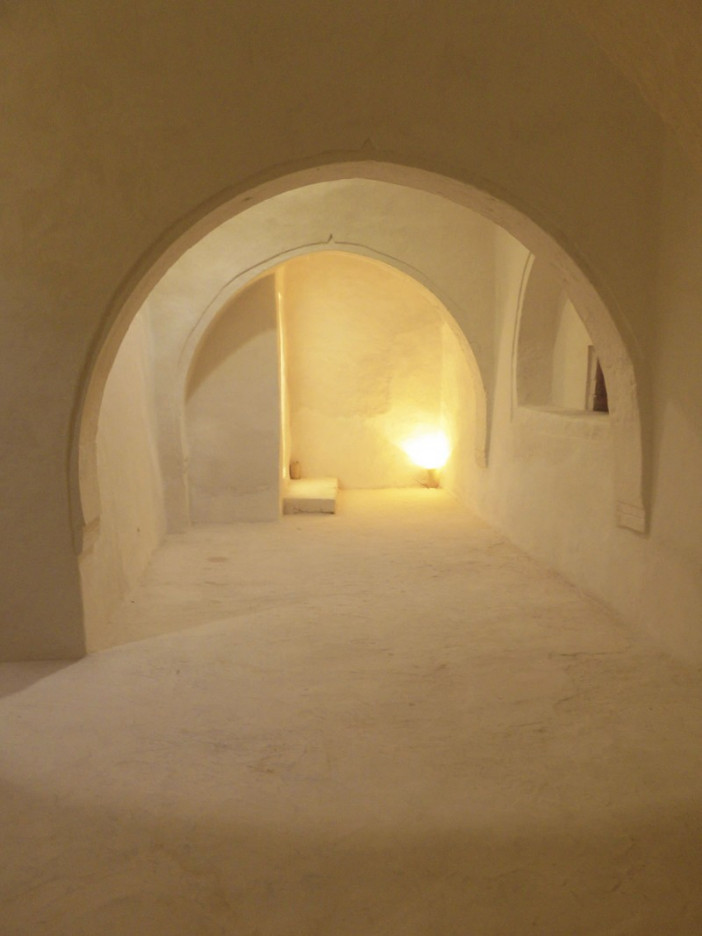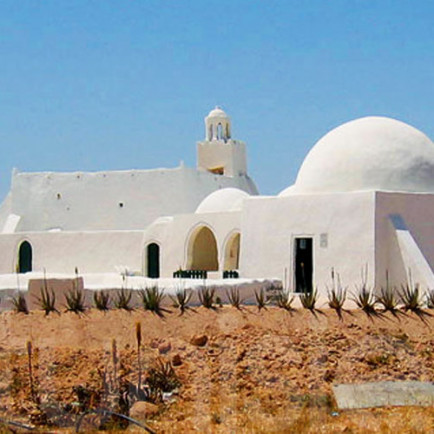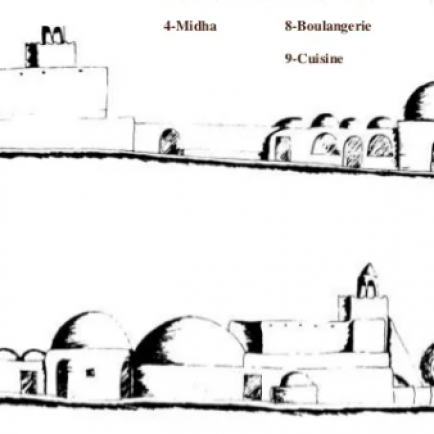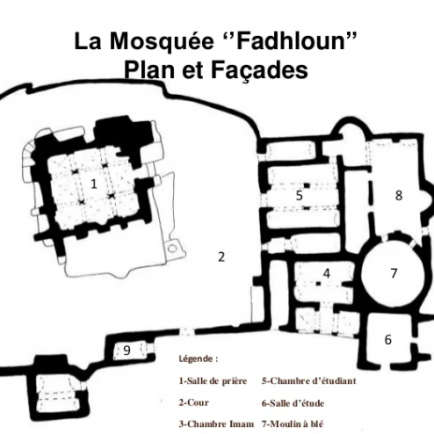The Fadhloun Mosque
History
The mosque was built in the 14th century. It is surrounded by a courtyard. For praying during intense heat, two areas with a “mihrab” are provided outside.
Urban and Architectural
It is one of the most amazing monuments of Tunisia's entire ancient architectural heritage, not just Djerba.
In Djerba's "landscape," he shows the harmony of the island's sacred buildings from a distance. Seen up close, the ensemble's arrangement and "anatomy" are astonishing, but they still create a transcendence that captivates the viewer. This monument consists of three parts:
A chapel towering in the middle of a fenced courtyard. The floor is covered with lime plaster.
Internal annex. It consists of a main room that housed the teachings of the Koran, and two small rooms are adjacent. One is for accommodation and the other is for food storage.
Annex and 'Koran' school with room for bathing. It is also used as an underground flour mill and bakery.
Description
The mosque is built low and reinforced by buttresses. It belonged to a group of mosques that protected the population in the event of an enemy attack. Originally, the small minaret was used not to call prayers, but to send optical signals. Guards can scale the outer walls of the mosque and place themselves on the roof. In front of the mosque, there are several arched rooms. A school, a bread oven, and a room for grinding and storing grains. The mosque was functioning as a bakery in the community. Outside, there is a large whitewashed promenade. It is used to collect rainwater and is stored in the tank below.
References
https://www.tunisiatourism.info/en/articles/la-mosquee-fadhloun-a-djerba
https://tunisiaeye.com/listing/fadhloun-mosque-djerba/
Details
Location
Ouled Amor, Djerba , Tunisia
Worshippers
50
Owners
The Tunisian Government
Year of Build
14th century
Area
1900
Drawings
Map
History
The mosque was built in the 14th century. It is surrounded by a courtyard. For praying during intense heat, two areas with a “mihrab” are provided outside.
Urban and Architectural
It is one of the most amazing monuments of Tunisia's entire ancient architectural heritage, not just Djerba.
In Djerba's "landscape," he shows the harmony of the island's sacred buildings from a distance. Seen up close, the ensemble's arrangement and "anatomy" are astonishing, but they still create a transcendence that captivates the viewer. This monument consists of three parts:
A chapel towering in the middle of a fenced courtyard. The floor is covered with lime plaster.
Internal annex. It consists of a main room that housed the teachings of the Koran, and two small rooms are adjacent. One is for accommodation and the other is for food storage.
Annex and 'Koran' school with room for bathing. It is also used as an underground flour mill and bakery.
Description
The mosque is built low and reinforced by buttresses. It belonged to a group of mosques that protected the population in the event of an enemy attack. Originally, the small minaret was used not to call prayers, but to send optical signals. Guards can scale the outer walls of the mosque and place themselves on the roof. In front of the mosque, there are several arched rooms. A school, a bread oven, and a room for grinding and storing grains. The mosque was functioning as a bakery in the community. Outside, there is a large whitewashed promenade. It is used to collect rainwater and is stored in the tank below.



